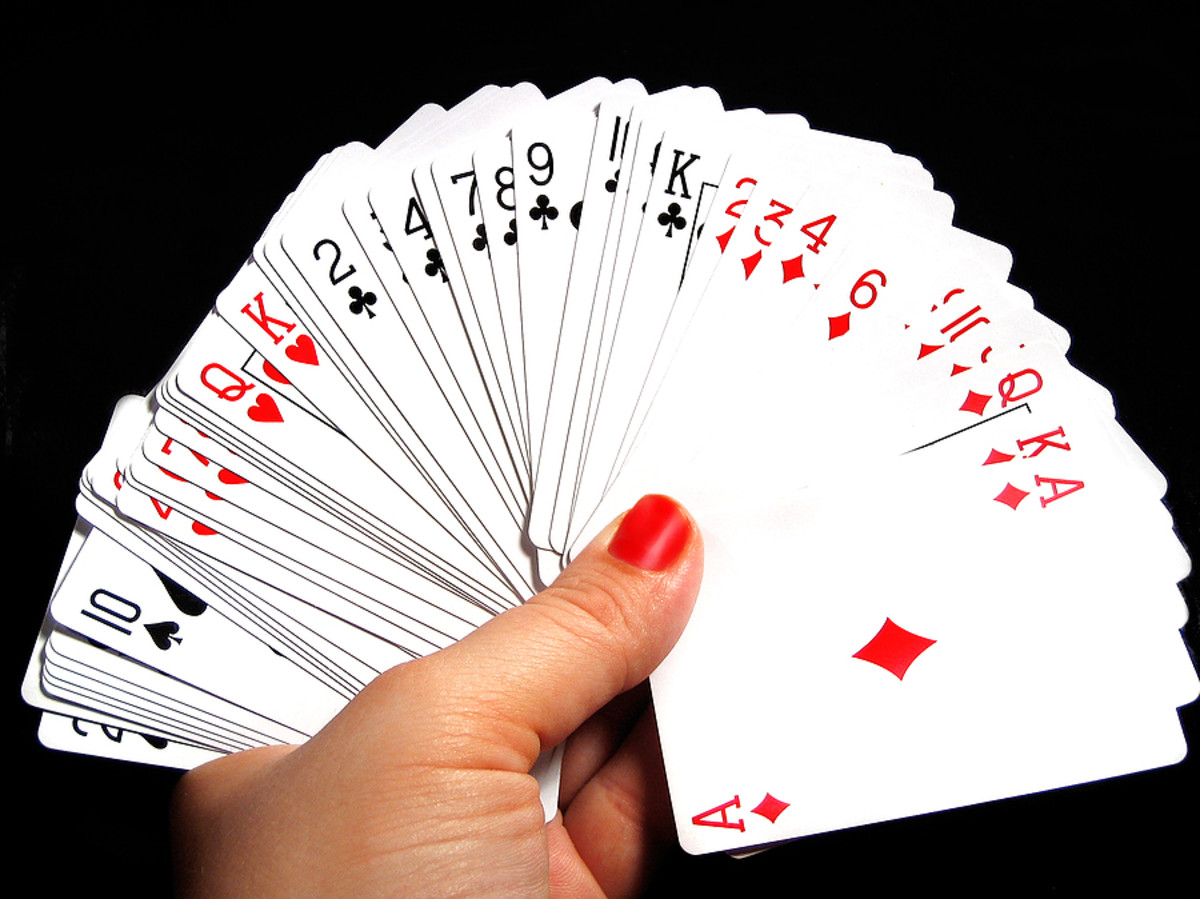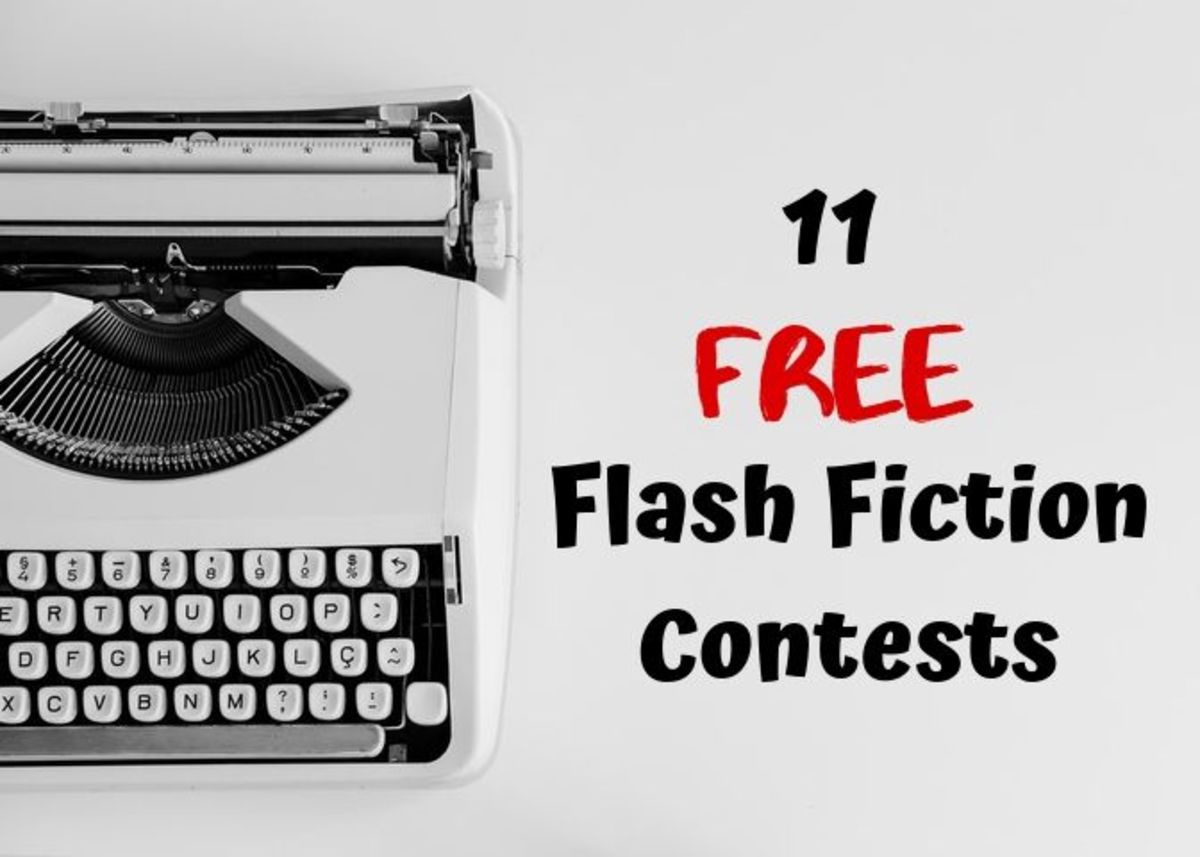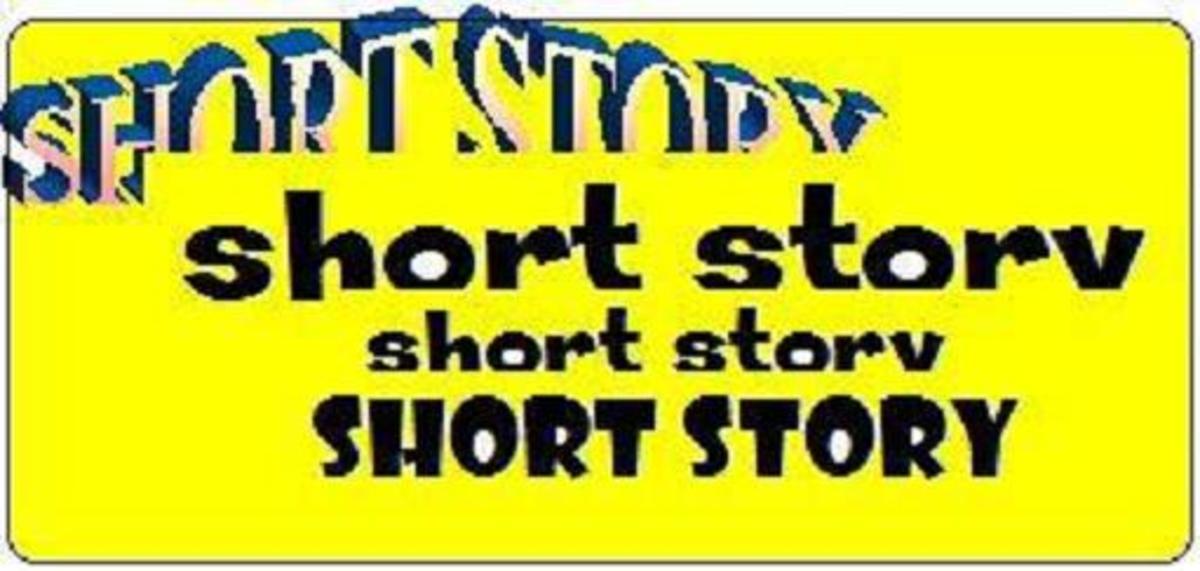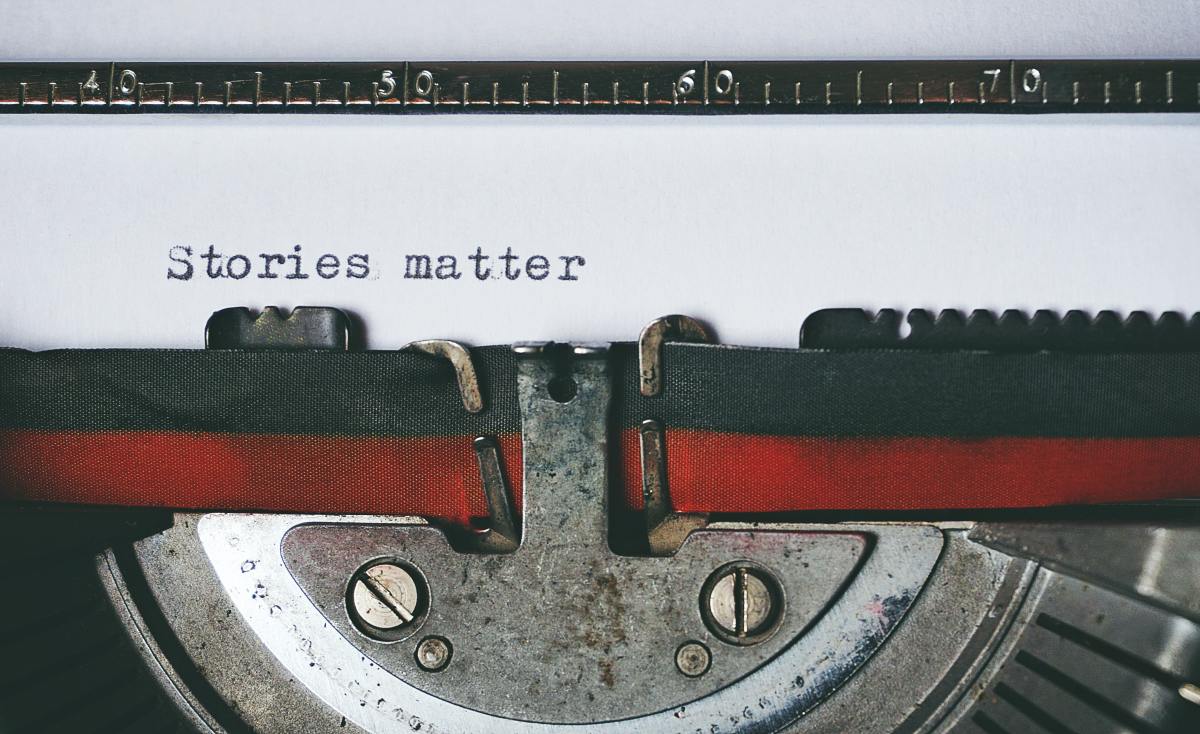A Guide to Understanding and Writing the Short Story: Tutorial 1
Reading Makes a Difference!
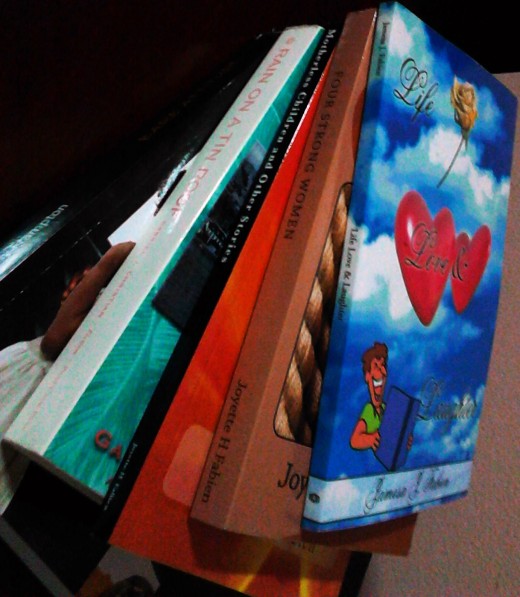
Three-Part Tutorial on the Short Story
This tutorial is intended to provide guidance to students who are preparing for English examinations as well as teachers preparing such students.
Students of English may simply be preparing to write the story, in which case they would need to be conscious of the various elements which must be considered in crafting the story. Alternatively, students of Literature would be preparing to analyse the story in which case they would need, in addition to knowledge of the various elements of the story, in depth comprehension of the literary devices used and the way in which they affect the story.This is discussed in another hub, Writing the Short Story- My Approach.
Tutorial I will give an overview of the short story, a look at the importance of a good title and a brief discussion of the parts of the story using an actual short story as illustration.
Tutorial 2 will discuss writers style and some key elements of the short story
Tutorial 3 will illustrate the elements of the short story using an actual short story.
Tutorial 1
A short story is the name given to a piece of narrative fiction which, while it is shorter than a novel, contains the same basic form. Expectedly, the plot is much simpler focusing on about three to five main events. The characters are fewer and less complicated and the setting is less diverse. The short story writer has to be economical in diction as well as description for unlike the novelist, he has fewer pages in which to connect meaningfully with his readers. Despite its brevity the short story usually seeks to present some insight into human life. The title is an important aspect of the story and the story itself conforms to a specific structure consisting of five basic parts:
- Opening/Exposition
- Problem and Obstacles
- Climax
- Resolution
- End
Title - A Good Title Attracts Attention
A good title reflects what the work is primarily about. It is one of the factors which attract readers and determine whether or not they go beyond the cover. It is therefore important that the reader examines the title and after having read the story, he must assess its relevance. The writer, likewise, has the responsibility to ensure that his title is appealing as well as relevant. The connection between title and story should always be evident.
The Parts of the Story
- Opening/Exposition – This usually presents a situation which becomes complicated as the story progresses.
- Problem - This refers to the complication of the story which is usually achieved through a number of obstacles/roadblocks/impediments whose purpose is to hinder the protagonist from achieving his/her objective.
- Climax – This is the point that all readers are eagerly waiting for. All the roadblocks lead to this high point of interest in the story.
- Resolution – Having reached the climax there is nothing left for the reader to learn except answers to questions, explanations to situations, decisions or resolutions made. The resolution is not a solution to the complications in the story; it is simply the presentation of a way forward, a means of bringing closure to the complicated situation or reverting to the original stable situation.
- End - Just as the story has an opening or beginning it must have an end which is fitting. It usually focuses on the protagonist and may choose to revert to the original situation which was presented in the exposition or create a new situation which is the outcome of the events of the story.The type of ending depends, to a large extent on the writer's individual style. He/she may choose an ending which is a natural culmination of the events of the story. In this case it would be a predictable ending. However, a surprise ending usually brings a pleasant twist to the story. Readers tend to prefer the 'happily ever after' type of endings; nonetheless, this may not be realistic particularly where stories depict true to life situations.
Crafting the Story
The effective handling of the structure of the Short Story can be illustrated through the following story.
My Muse
from the collection From "What! No cheese?" to What Might Have Been
by Jenel J Fabien.
She walked upon my bed of dreams, silhouetted in the meandering streams of vision that flow through my mind daily. A smile plays around my lips as I relive those nostalgic scenes from my past over and over again, forever pondering, forever reminiscing those times I used to spend with Miss Carmen.
How my heart would leap from my chest and start palpitating every time she was near! How perplexing it was to comprehend that such a beautiful vision could truly exist! Miss Carmen was sweet, sweet, sweet, sweet, sweet, sweet, sweet. It was the kind of sweet that made molasses seem sour. At the time, she was my reason for living, my reason for breathing; my reason for existing!!!! No doubt about it, Carmen was the person who played the most important role in my life. I was only eight back then, and she was my fourth grade teacher. Miss Carmen!
Every day I would sit in class and doodle pictures of her. Every day she would come up to me and say to me in that petite voice of hers, “Mr. Sanders, why aren’t you doing your work?” I would often reply, “’Cause I’m looking at you, Foxy Mama,” or “You know Miss Thang, your feet must hurt because you’ve been running through my mind all morning.” She would give me a cold stare with those pretty eyes of hers, which absolutely turned me on. She would take my drawing away (the only thing I didn’t like about her) and she would give me an after school detention. I got detentions practically every day; a full hour to sit and stare at Miss Carmen, just her, me and a few other trouble-makers.
Ms.Carmen would set us to work while she marked papers. She would twist her pretty face into a mean looking expression and I would take even greater pleasure in drawing her then. Of course, I was usually caught and my drawings confiscated. I would be torn for a while until I caught sight of her broad, cocoa hips and then I’d be all smiles again.
Then one day Miss Carmen did not come to school. She was sick, the principal told us. I volunteered to take her flowers on behalf of the class. That afternoon my big brother drove me to her apartment. Waiting in the car, he told me to make my visit short. I rang the doorbell and a young man opened the door. He told me to come in and wait in the hall. When I entered I was astounded, for the apartment walls were papered with doodles of Miss Carmen. My doodles!
The first thing I did was to ask her about my doodles. “You have great potential,” she said, “for a little kid.” She mumbled something else under her breath. It sounded like “a bratty one too”, but I pretended not to hear that part. “If only you would explore something else besides me.” She continued, “I’m sure you can make it big someday.” Those were her words, the words that would shape my destiny.
I found out later that the young man who had opened the door was Miss Carmen’s fiancé. This made it surprisingly easy to draw other things besides her. Suddenly, she was n’t really that enchanting any more. I drew dogs, cats, boats, scenery and later on, my fifth grade teacher, Miss Anne.
Right now, I draw for Fox kids, Digimon to be specific. And I’m filthy, stinky rich. My wife, kids and I live in a pent house in Beverly Hills. I also draw for art galleries all over the world. Whenever asked how I got so big, I would simply say, “Someone I loved once told me that I had the potential to make it big and I did.” As you can guess, the person is Miss Carmen. She will forever be my muse for success.
Jenel Fabien Age 13
Books are Friends
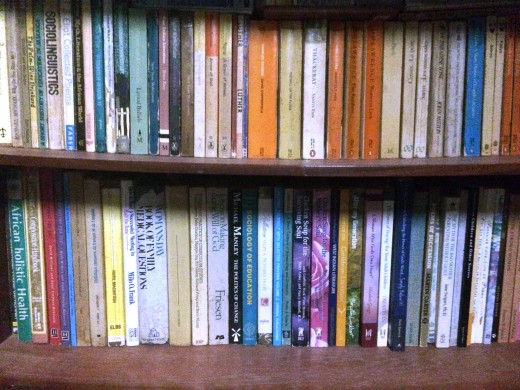
Analysis of the Story 'My Muse' by Jenel J Fabien
- Opening/Exposition
The story, opens with the first person narrator, who is also the main character reminiscing fondly about his fourth grade teacher, Ms. Carmen. It is a relatively simple situation. The story becomes complicated when Sanders goes back in memory to those days when he was a student in Ms. Carmen’s class. He describes her as “sweet, sweet, sweet, sweet, sweet, sweet, sweet” This puts things in perspective for the reader can perceive right there that he has a crush on Ms. Carmen. It is important that the main characters, Sanders, the narrator/ protagonist and Miss Carmen, the antagonist are both introduced right in the opening paragraphs of the story.
- Problem
The student has a crush on his teacher. The problem arising out of this situation is quite obvious and is bound to complicate the story.
Obstacles:
1. The obvious differences in age and positions make the situation impossible.
2. When Sanders addresses Miss Carmen she responds coldly.
3. She confiscates his drawings.
4. She gives him after school detentions.
5. During detentions she wears a mean expression.
6. A fiancé comes into the picture.
The obstacles build up and something is bound to happen sooner or later. This is what keeps the reader hanging on for he/she wants to know how this is going to unfold.
- Climax
The story reaches its climax when Ms. Carmen fails to show up at school one day. Her students are informed that she is ill and Sanders, the narrator offers to take her flowers on behalf of the class. When he arrives at her house he is greeted by a fiancé who ushers him in. This brings about an immediate change in attitude. Suddenly, Ms. Carmen seems to lose her glamour and it occurs to Sanders that he can draw other things. He is amazed to find his doodles plastering the walls of Ms. Carmen’s home. When he questions her about it she informs him that he has great talent which he should put to use by exploring other subjects. This is probably the turning point for Sanders. It is from then on that he overcomes his infatuation for Ms. Carmen and begins to diversify his doodles. Most importantly, her words of advice serve to inspire him to find his true calling and to follow his chosen path.
- Resolution
The narrator, on leaving Ms. Carmen’s house, is a new person. He has finally found himself. Years later Sanders is able to look back fondly on the incident which served to propel him onward to becoming the magnate which he eventually became. The resolution provides an explanation for the events which have been recounted.
- End - The story opens with the narrator/protagonist reminiscing about Ms. Carmen and the events of his childhood which influenced his future. The situation has returned to its original stability. The entire story is told in retrospect. The end brings the narrator back to the present and connects the present with the events of his past.
It is my hope that this tutorial will prove to be as helpful as intended. Please go on to Tutorials 2 and 3.
Writing Articles
- Tutorial: Dialogue in the Story
Dialogue can be a very effective tool in story writing; it can be used to break the monotony of continuous narrative and is an important element of characterization and setting. - Descriptive Writing - Using the Five Senses
When describing it is important that you engage the reader fully by making him see, hear, feel, taste and/or smell that which you are describing; you should use language which appeals to the senses. - Writing the Short Story - My Approach Part 2
Part 1 of this topic outlines the basics of the Short Story. Part 2 will provide examples and illustrations to clarify terms and definitions used in Part 1. - A Guide to Understanding and Writing the Short Story...
This three-part Short Story Tutorial is intended as a simple guide to assist students and teachers in understanding and writing the Short Story. Tutorial 2 will focus on the elements of the story. - A Guide to Understanding and Writing the Short Story...
This three-part Short Story Tutorial is intended as a simple guide to assist students and teachers in understanding and writing the Short Story. Tutorial 3 provides a practical example. - Writing the Short Story - My Approach Part 1
A good command of language and a good understanding of the elements of the short story are necessary prerequisites to writing the short story. The rest is left to the writer's skill and creativity.
© 2011 Joyette Helen Fabien

